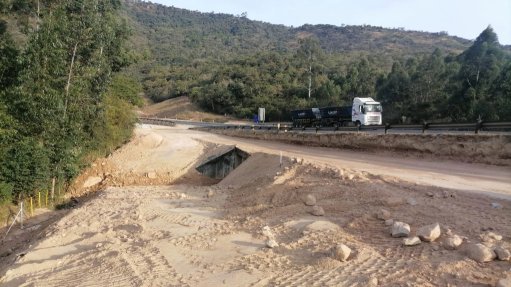Ransomware isn’t going away but these tactics keep you ahead
This article has been supplied and will be available for a limited time only on this website.
By: Nemanja Krstić, - Operations Manager - Managed Security Services at Galix
Ransomware continues to be one of the most disruptive and costly threats facing organisations today. With attacks capable of halting operations, damaging brand reputations, and draining financial resources, the risk is not only real; it’s escalating. In this climate, businesses must shift from reactive firefighting to a more strategic, proactive approach that minimises vulnerabilities, strengthens recovery strategies, and encourages collaboration across the board.
Start with the basics: vulnerability and patch management
At the heart of every robust cybersecurity strategy is a surprisingly simple yet frequently overlooked element: vulnerability and patch management. Cybercriminals often exploit known vulnerabilities in outdated software, making regular updates a critical first line of defence. But patching isn’t just about installing the latest software version, it requires a consistent, structured process to identify and address weaknesses across the IT environment.
When executed properly, patch management forms the backbone of a broader vulnerability management strategy. It might not carry the glamour of cutting-edge AI tools or advanced threat detection systems, but its role in reducing risk exposure is foundational. By closing off well-known entry points, organisations immediately reduce their appeal as easy targets.
Backups: your business’s safety net
Once systems are patched and secure, the next step is ensuring you have a solid backup strategy. Backups act as a vital safety net in the event of a ransomware attack. Best practice is to maintain multiple copies of data, stored in geographically separate locations—including cloud or offsite environments that are isolated from the main network.
But backups are only effective if they work. Regular testing is essential to ensure data can be restored quickly and accurately. In this regard, cloud platforms have become indispensable, offering secure, scalable, and accessible disaster recovery options. A well-tested, resilient backup system can be the difference between a swift recovery and a devastating data loss.
Good cyber hygiene: everyday security wins
While infrastructure plays a crucial role, so do the people who use it. Day-to-day cybersecurity habits across an organisation are just as important as technical safeguards. Practices like Multi-Factor Authentication (MFA), secure password policies, and advanced endpoint protection create layers of security that slow attackers down—or keep them out entirely.
Many organisations already have access to powerful cybersecurity tools, but underutilisation is a common issue. It’s important to understand the full capabilities of existing solutions and ensure they are properly configured. These everyday actions often serve as the first and most reliable barrier against opportunistic threats.
Control access, control risk
User privilege management is another key line of defence. Attackers often target privileged accounts, especially admin-level users, because of the broad access they provide. Applying the Principle of Least Privilege (PoLP), giving users only the access they need, dramatically reduces the potential damage in the event of a breach.
Administrative accounts, in particular, should be tightly controlled and monitored. Enabling MFA, reviewing access rights regularly, and auditing account usage can prevent both internal misuse and external compromise. These controls not only limit damage but also reduce the time it takes to detect and contain a breach.
Why paying ransom is a risky gamble
In the chaos of an attack, the idea of paying a ransom may seem like the fastest route to recovery. However, this approach is fraught with risk. There is no guarantee the data will be returned, nor that the attackers won’t come back—or sell the information elsewhere.
What’s more, paying up contributes to the larger ransomware ecosystem, fuelling more attacks. Organisations also face regulatory and legal challenges if they fail to report or handle breaches properly, especially under laws like GDPR or POPIA. A well-prepared, prevention-focused strategy remains the most responsible and sustainable path forward.
Stay one step ahead with threat intelligence
Knowledge is power in cybersecurity. Leveraging threat intelligence from reputable sources can help organisations anticipate emerging risks and adjust their defences accordingly. These insights provide details on how attackers operate—what tactics, techniques, and procedures they’re using, allowing security teams to act pre-emptively.
Sharing this intelligence within industry groups is equally powerful. The financial sector, for instance, has long benefited from information-sharing initiatives that foster collective defence. By participating in such networks, businesses can align on standards, reduce duplicated effort, and respond faster and more effectively to evolving threats.
Planning for the worst: incident response
Even with the strongest defences, no system is entirely foolproof. That’s why a well-crafted Incident Response Plan (IRP) is essential. This isn’t just an IT concern; it must involve legal teams, communications personnel, and senior leadership. Clear roles and backup communication methods are crucial, especially if primary systems are compromised.
Regular tabletop exercises and simulations are vital to refine your response. These drills help identify gaps and prepare teams to act swiftly under pressure. Tailored playbooks for specific scenarios like ransomware or phishing attacks make the response more structured and effective.
Downtime from ransomware can quickly snowball into lost revenue, productivity setbacks, and reputational harm. Testing and refining recovery strategies, supported by investments in cloud-based backups and partnerships with Managed Security Service Providers (MSSPs), significantly shortens recovery times.
Learning and adapting post-incident
Recovery doesn’t end with restoring data. A post-incident review is essential to understand what went wrong, what went right, and how to improve. Updating policies, retraining staff, and adapting the IRP based on lessons learned helps build a culture of constant vigilance.
This ongoing refinement transforms every challenge into an opportunity for growth, making the organisation more resilient with each incident. It’s a continuous cycle of learning that’s critical in today’s fast-changing cyber landscape.
A layered defence for long-term resilience
There’s no silver bullet for stopping ransomware. But a layered approach, starting with basic hygiene like patching and backups, progressing through access control and response planning, and ending with collaboration and threat intelligence creates a strong defence.
By investing in preparedness and working together across industries, businesses can stay ahead of attackers, protect their assets, and ensure continuity no matter what comes their way. In the world of cybersecurity, resilience isn’t a destination, it’s an ongoing journey.
Comments
Announcements
What's On
Subscribe to improve your user experience...
Option 1 (equivalent of R125 a month):
Receive a weekly copy of Creamer Media's Engineering News & Mining Weekly magazine
(print copy for those in South Africa and e-magazine for those outside of South Africa)
Receive daily email newsletters
Access to full search results
Access archive of magazine back copies
Access to Projects in Progress
Access to ONE Research Report of your choice in PDF format
Option 2 (equivalent of R375 a month):
All benefits from Option 1
PLUS
Access to Creamer Media's Research Channel Africa for ALL Research Reports, in PDF format, on various industrial and mining sectors
including Electricity; Water; Energy Transition; Hydrogen; Roads, Rail and Ports; Coal; Gold; Platinum; Battery Metals; etc.
Already a subscriber?
Forgotten your password?
Receive weekly copy of Creamer Media's Engineering News & Mining Weekly magazine (print copy for those in South Africa and e-magazine for those outside of South Africa)
➕
Recieve daily email newsletters
➕
Access to full search results
➕
Access archive of magazine back copies
➕
Access to Projects in Progress
➕
Access to ONE Research Report of your choice in PDF format
RESEARCH CHANNEL AFRICA
R4500 (equivalent of R375 a month)
SUBSCRIBEAll benefits from Option 1
➕
Access to Creamer Media's Research Channel Africa for ALL Research Reports on various industrial and mining sectors, in PDF format, including on:
Electricity
➕
Water
➕
Energy Transition
➕
Hydrogen
➕
Roads, Rail and Ports
➕
Coal
➕
Gold
➕
Platinum
➕
Battery Metals
➕
etc.
Receive all benefits from Option 1 or Option 2 delivered to numerous people at your company
➕
Multiple User names and Passwords for simultaneous log-ins
➕
Intranet integration access to all in your organisation





















